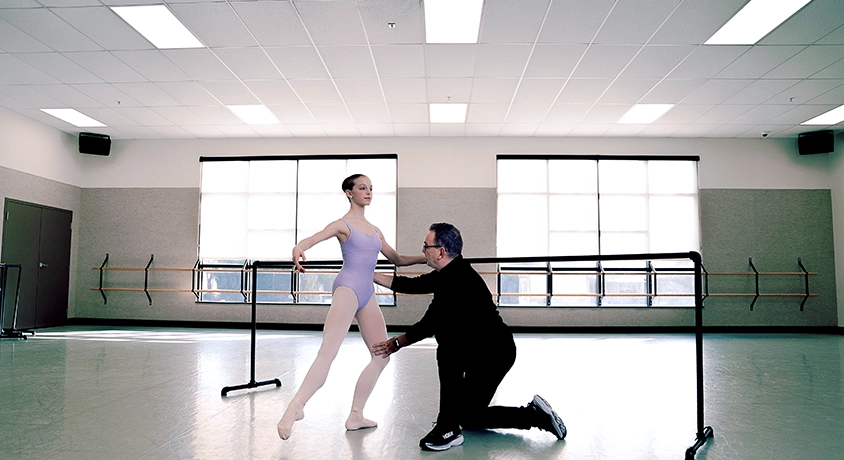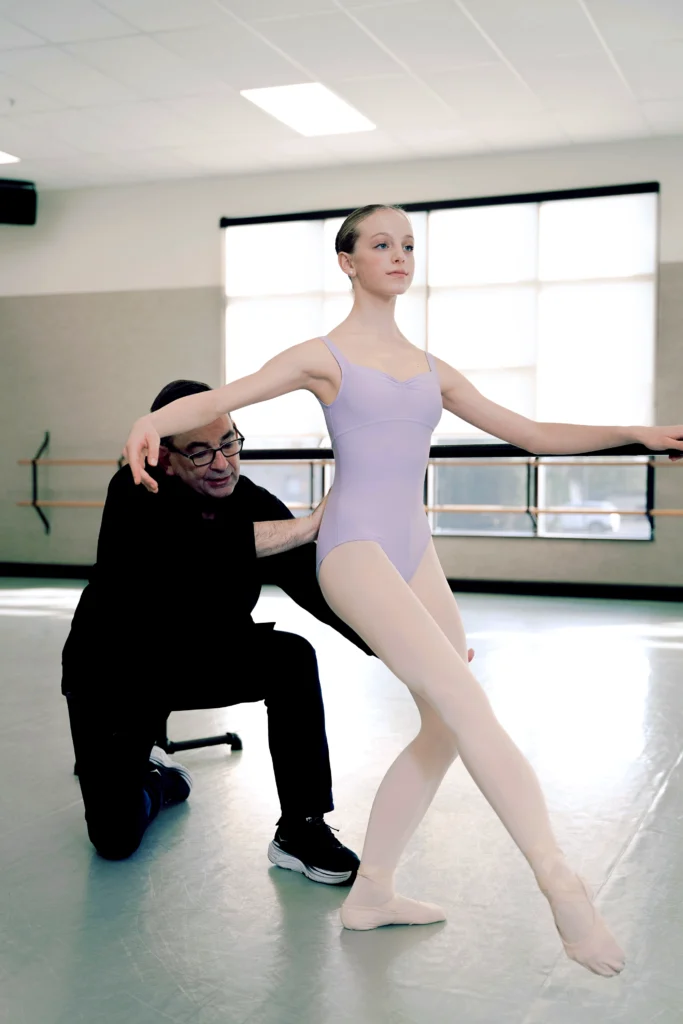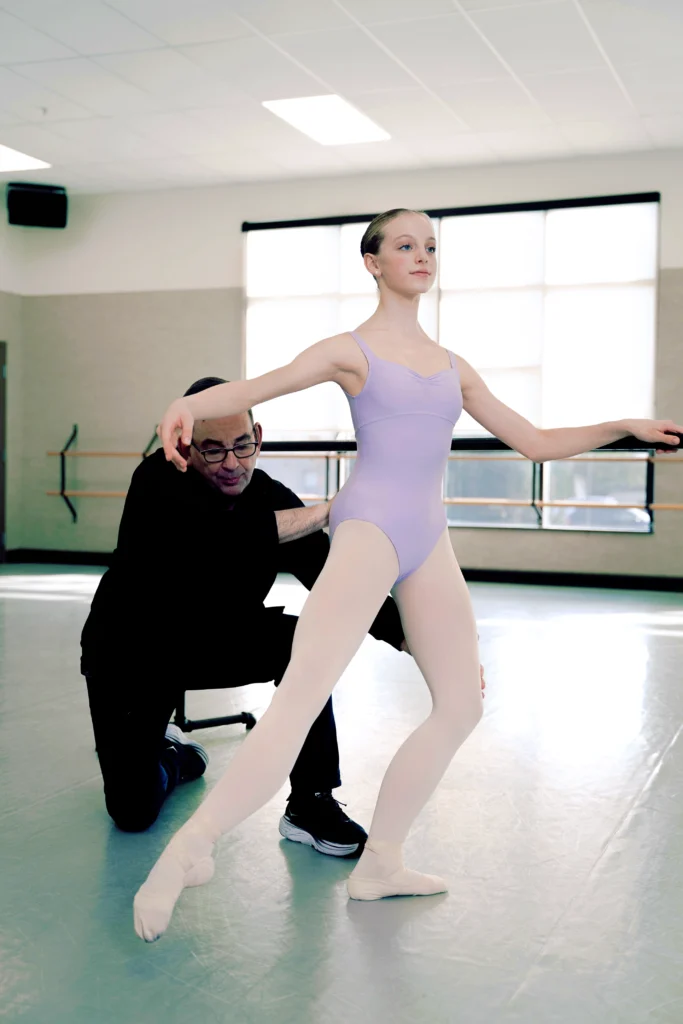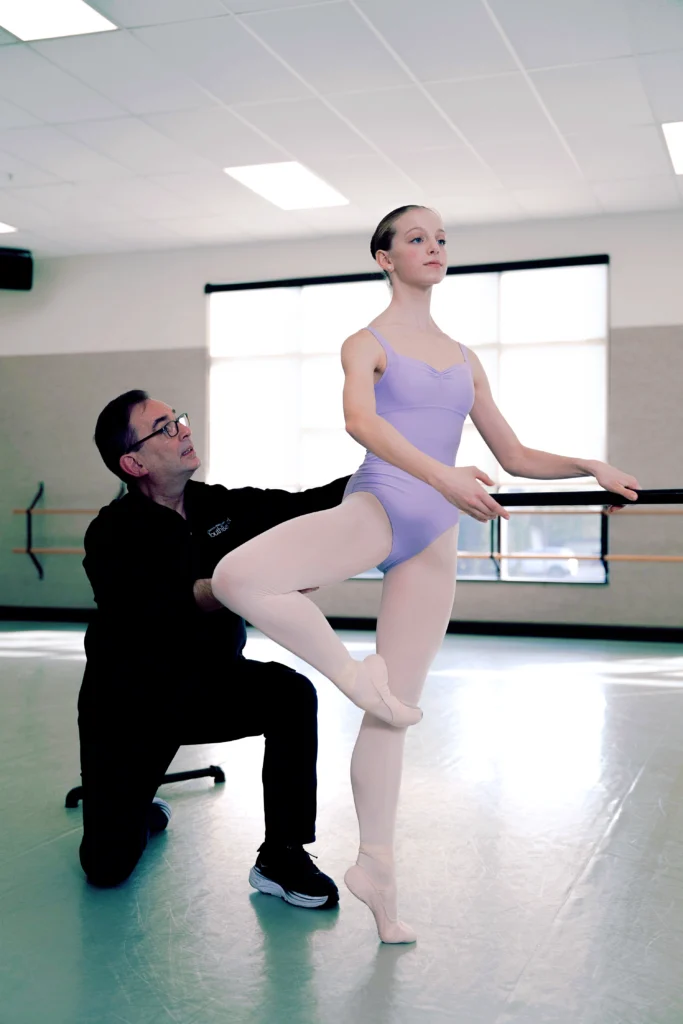Mastering Fouettés With Alan Hineline
Performing 32 fouettés is widely regarded as the ultimate display of strength and control in many principal roles. Although “fouetté” translates to “whipped,” there is much more to this step than spinning, physically and mentally.
Alan Hineline, resident choreographer and director of the pre-professional division at Central Pennsylvania Youth Ballet, says a good fouetté turn is all about the breakdown, as well as developing coordination and strength over time. “Learning to do a fouetté is very compartmentalized,” he says. “The progression is important. If you try to skip building the foundation, it will just be a trick.” Below, Hineline shows us how he teaches it to his students and addresses some common mistakes.
The Standing Leg
At CPYB, students typically begin laying the groundwork for fouettés early in their training. By practicing the motion of a fouetté at the barre, Hineline’s students can focus on the standing-leg turnout and finding a stable demi-plié.
One of the barre combinations used to introduce fouettés, as demonstrated in the video above, begins with a demi-rond-de-jambe. As the working leg moves quickly from front to side, the standing leg enters a deep, dynamic demi-plié. Repeat the demi-rond-de-jambe to plié and, this time, deepen the plié à la seconde before rising to demi-pointe, holding the working leg à la seconde. Add a final set of demi-rond-de-jambe to plié à la seconde, and relevé to a retiré balance. As you start to feel stronger, add a fouetté pirouette to this combination, and then complete similar exercises in the center.
Hineline emphasizes the importance of correct weight distribution in the pirouette preparation. To build toward fouettés in the center, Hineline teaches single pirouettes from fourth that finish with the leg completing a demi-rond-de-jambe motion. “We start very slowly in the center—almost painfully slowly—to help them build strength in the positions without relying solely on coordination,” he says.
The challenge for the standing leg is to stay turned out for the duration of the step while the working leg moves. Hineline tells his students to open the leg in a very slight croisé devant at 90 degrees as they plié, then stay in plié while they carry the leg to the side. The leg “whips” to second position, then enveloppés to retiré, and the standing leg stretches to relevé. If the standing leg is supported correctly and the dancer can keep their weight over the ball of their foot, then it will be easier to keep the hips stable and the core engaged as the working leg completes its path.
Choose Your Thoughts Wisely
When asked about the most common mistakes he sees, Hineline says: “Mostly, I see students—and older dancers, too—go into panic mode rather than finishing each part of the step, and then it starts looking like they’re throwing themselves into it.” To stay calm, be mindful of your inner monologue and approach to the movement. “Don’t get in a hurry, just think about the breakdown of the step,” says Hineline. “You can either choose to get in your head, or you can choose to stay in the moment and focus on the technical clarity the step requires.”
Individual Progression
Hineline acknowledges that the time it takes to build the strength, coordination, and mental focus for fouettés is different for each dancer. “Some dancers adapt to it right away, and some might take longer, and that’s okay. They’re humans, not machines,” he says. It’s important to understand the step and how to execute it in your own body instead of rushing the process to keep up with others. “Adding their own sense of coordination to the strength that they build is usually what takes time for some people,” Hineline says. “Instead of getting frustrated, stick with it. If you try to jump ahead before you’re ready, you will just end up having to go back and fix all of it.”









